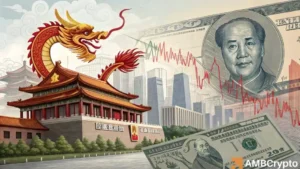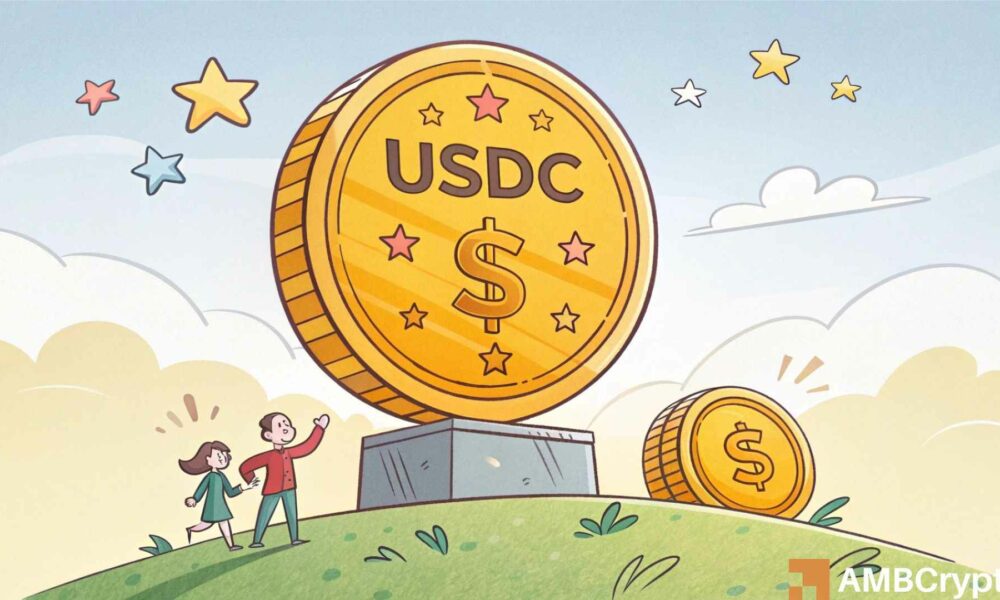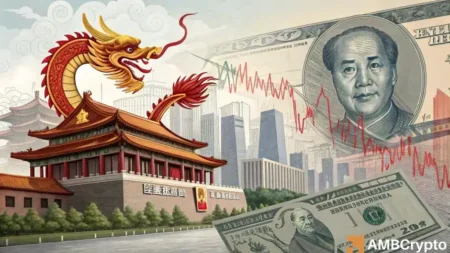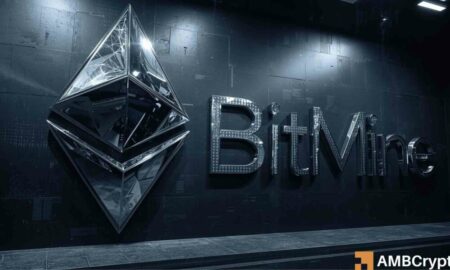USDC’s Expansion and Dominance: A New Era in the Stablecoin Market
The cryptocurrency landscape is continuously evolving, and Circle’s stablecoin, USDC, is at the forefront of this transformation. Recently, USDC’s market cap has soared to unprecedented levels, crossing a new all-time high of $60.2 billion, a remarkable leap from its previous peak of $55 billion recorded in 2022. This surge not only highlights the increasing acceptance of cryptocurrencies but also signifies USDC’s position as a formidable player in the stablecoin arena. In stark contrast, Tether’s USDT, which currently holds a dominant market cap of $144 billion, has seen more modest growth, adding only $4.4 billion to its reserves over the same period.
In recent months, USDC has showcased extraordinary growth, particularly in the last three months, where it has added over $16.3 billion to its market cap—a 100% increase, jumping from around $30 billion in early March 2024. This growth trend begs the question: can USDC challenge the supremacy of USDT? On paper, the statistics suggest that USDC’s aggressive expansion and adoption may position it as a close competitor to USDT, especially if it continues at this accelerated pace. The data from Artemis Analytics indicates a stark contrast in growth, with USDC significantly outperforming USDT during this period, hinting at a potential shift in the balance of power within the stablecoin market.
Despite USDC’s impressive growth figures, Tether’s USDT remains deeply entrenched in the cryptocurrency market due to its broad liquidity and widespread recognition. Investors and institutions continue to favor USDT for its stability and established presence. However, Circle’s strategic initiatives indicate that USDC is not merely content with its advancements but is poised to create an even stronger competitive edge. With fully backed reserves and regulatory compliance, USDC enhances its trust factor among institutional partners, which may be key in persuading users to transition from USDT to USDC over time.
To solidify its market presence, USDC has made significant strides toward global expansion. Recently, it launched in Japan through a partnership with SBI VC Trade, marking its entry into Asia’s burgeoning stablecoin market. This move is strategically vital, as it allows USDC to tap into a region with growing crypto user bases and increases its potential transactions significantly. Furthermore, USDC is enhancing its infrastructure by upgrading its cross-chain capabilities, which allows for faster and more efficient transfers across platforms such as Avalanche, Base, and Ethereum. By reducing transaction times from minutes to mere seconds, USDC is solidifying its utility and appeal in a rapidly evolving digital landscape.
The continuous growth and development of USDC also correlate with a larger trend in the stablecoin sector, as evidenced by the total stablecoin market cap surpassing $230 billion—a historic high in itself. This overall market growth further emphasizes that consumers and institutions are increasingly gravitating toward stablecoins as viable alternatives for transactions, savings, and investments within the cryptocurrency ecosystem. As USDC continues to enhance its features and broaden its global reach, it stands to play an even more influential role in shaping the future of cryptocurrency by providing users with stability, efficiency, and robust institutional backing.
In conclusion, USDC is experiencing remarkable growth and expansion in the stablecoin market, aided by its technological upgrades and global outreach. While Tether’s USDT continues to command a substantially larger market share, the recent developments surrounding USDC indicate that it is on a trajectory to challenge existing norms and may redefine the competitive landscape within the stablecoin sector. As the adoption of cryptocurrencies continues to rise, USDC’s advanced capabilities, regulatory compliance, and global partnerships may ultimately see it become a serious contender that could change the fate of stablecoins in the future.
















